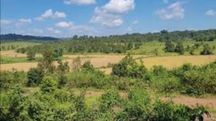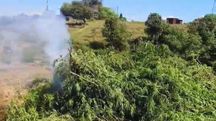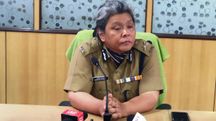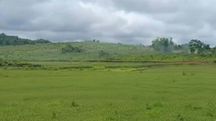St. Anthony’s team turns hackathon win into hope for Meghalaya’s caves
A team from St. Anthony’s College, Shillong, has brought laurels to the state by securing the second prize at the prestigious national-level competition, "110 Hours Hackathon", organised by the Zoological Survey of India (ZSI) in commemoration of 110 years of the ZSI’s founding. The central theme of the hackathon was Biodiversity and Climate Change.
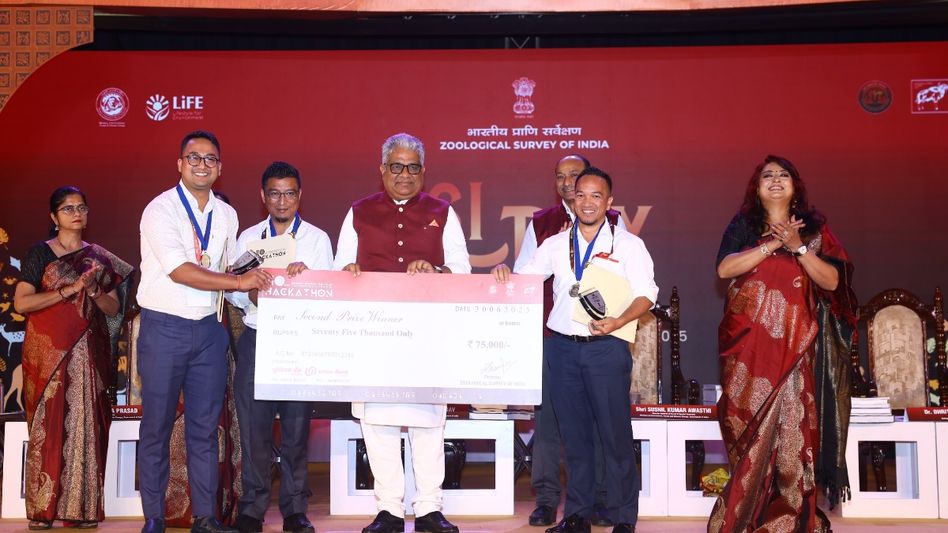
Caves across Meghalaya could soon benefit from cutting-edge monitoring technology after a team from St. Anthony's College, Shillong, secured second place at the prestigious 110 Hours Hackathon organised by the Zoological Survey of India. Their innovative project, CaveSense, represents a breakthrough in cave conservation methodology, combining low-cost sensors with community engagement to protect one of the state's most fragile ecosystems.
The three-member team, led by Dr Damanbha Lyngdoh from the Department of Zoology, developed an app-based monitoring system that can detect real-time environmental and human disturbances in cave environments. The technology integrates motion, vibration, and environmental sensors with wireless data logging and alert systems, specifically designed for the rugged terrain of Meghalaya's cave systems.
"Conservation is usually a slow and long-term process, while hackathons are fast and focused on quick innovation," explained Dr Lyngdoh, speaking to India Today NE. "At first, it seemed like a big contrast, but we saw the hackathon as a way to create ideas and tools that could support long-term conservation efforts."
The CaveSense system addresses a critical gap in cave ecosystem monitoring. Traditional conservation methods often lack the precision needed to track subtle environmental changes that can indicate ecosystem stress. The new technology promises continuous monitoring capabilities that could revolutionise how scientists and conservationists approach cave protection.
However, the team acknowledges the challenges ahead. "We didn't test the prototype inside the cave itself; we had to rely on theory and lab-based logic," Dr Lyngdoh admitted. "It worked well in a controlled setting, but we all knew that real-world cave environments could pose challenges. In the end, it reminded us that prototypes are only the beginning, and for real impact, they need to be tested, refined, and guided by field experience."
The project emerged from a unique collaboration between three specialists: Thyanswer Challam from Biochemistry & Biotechnology, who brought IoT expertise; Saurabh Kumar Thapa, a systems administrator with technical engineering skills; and Dr Lyngdoh, whose background in zoology and ecology provided the conservation framework.
"Being part of a smaller college setup, unlike larger universities, meant that we already had a close working relationship," Dr Lyngdoh noted. "Rather than feeling any tension, the experience was actually enjoyable and enriching. It became a space for shared learning and collaboration, where each of us brought our strengths to the table."
The team's success story began at the North Eastern Regional Centre in Shillong on May 23, where they won the regional round. They then advanced through semi-finals in Pune on June 9, competing against 105 shortlisted teams from across India. The final competition in Kolkata on June 30 featured only five teams, with St Anthony's College securing second place behind Ladakh team.
CaveSense forms part of a broader initiative called KremCare, which emphasises community-driven conservation. The system is designed not just for scientific monitoring but also for assessing tourism impact and engaging local communities in conservation efforts.
"Awards and academic recognition are truly encouraging, but they've never taken me away from the ground," Dr Lyngdoh reflected. "Fieldwork keeps me connected to the realities that no lab or journal can fully capture. And working with our own local communities reminds me that conservation isn't just about data or policy, but about people, relationships, and respect for traditional knowledge."
The technology's potential extends beyond Meghalaya's caves. The sensor-based approach could be adapted for monitoring other sensitive ecosystems, making it a valuable tool for biodiversity conservation across India. The team's emphasis on low-cost, locally adaptable technology aligns with India's growing focus on indigenous innovation in environmental protection.
Lyngdoh, who holds a PhD in biodiversity and conservation, brings significant research credentials to the project. His accolades include the Young Scientist Award by the Indian Society for Parasitology (2016), the Sudev Bhusan Young Scientist Award by the Zoological Society of India (2016), and the European Molecular Biology Organization Travel Grant to Greece (2023).
"Since this is a team effort, awards and recognition don't play a direct role in the working process, but indirectly, they've led us to develop a competitive spirit and a drive to make a name for ourselves in the competition," he said.
The final event was presided over by Union Minister for Environment, Forest and Climate Change Bhupendra Yadav, highlighting the national significance of biodiversity conservation initiatives. The hackathon was conducted as part of the Animal Taxonomy Summit, commemorating 110 years of the Zoological Survey of India.
Looking ahead, the team remains realistic about implementation challenges. "If something doesn't work, our biggest takeaway would be to listen more, both to the environment and to the people who live closest to it," Dr Lyngdoh emphasised. "In the future, we would focus on building a flexible and user-friendly system that adapts to the realities on the ground."
The CaveSense project embodies a new approach to conservation that bridges scientific rigour with community engagement. As Meghalaya's caves face increasing pressure from tourism and environmental change, such integrated solutions may prove essential for preserving these unique ecosystems for future generations.
Copyright©2025 Living Media India Limited. For reprint rights: Syndications Today




